Well, ladies and gentlemen, we’ve arrived at 1947 in our ongoing series here, and the Hollywood cartoon is still in peak form. Studios like Warner Bros. and MGM are consistently turning out excellent films, and Disney is keeping things afloat with some high-quality short films and the feature cartoon Fun and Fancy Free, which includes the classic Mickey and the Beanstalk sequence, along with the forgettable Bongo segment.
Even frequently derided studios like Terrytoons and Columbia/Screen Gems have some interesting releases this year thanks to newly arrived talent like Jim Tyer at Terrytoons (whose zany, erratic animation served as a saving grace to a great many Mighty Mouse and Heckle & Jeckle cartoons) and Bob Clampett at Columbia (who very briefly served as a story editor / creative consultant, giving way to unusually inspired, if not wholly successful, shorts like Cockatoos for Two and Up n’ Atom).
In regards to new stars, Warner Bros. debuted some of my favorite minor characters in the Looney Tunes stable: the Goofy Gophers (who showed up in the appropriately titled The Goofy Gophers, directed by Arthur Davis) and Charlie Dog (who debuted in Chuck Jones’ Little Orphan Airedale, although a precursor to the character appeared in the 1941 Bob Clampett short Porky’s Pooch). The studio also launched one of the most famous cartoon series ever by pairing Tweety and Sylvester in Tweetie Pie, for which Friz Freleng won the Academy Award. Other studios didn’t have as much luck with new characters and series this year; the only one I could dig up was Buzzy Crow, a Rochester approximation who appeared in this year’s enjoyable The Stupidstitious Cat over at Famous Studios.
On this list, you’ll find the usual suspects (Warner Bros. and MGM), along with a Disney cartoon, a post-apocalyptic stop-motion short and an abstract piece.
Take a look:
BIRTH OF A NOTION
Directed by Robert McKimson; Warner Bros.
Considering that Birth of a Notion is one of Robert McKimson’s defining films as a director, it’s interesting to note that the film began production under Bob Clampett. He left the studio during the storyboard stage, and McKimson wound up taking over. In the film, Daffy decides to skip out on flying south for the winter, swindling his way into staying over at the house of a dog named Leopold. Unfortunately, Leopold’s master – a caricature of actor Peter Lorre – is conducting a science experiment and is in desperate need of a duck’s wishbone. The crazy, offbeat story would seem ideally suited to Clampett, but McKimson rises to the occasion, successfully bringing to the screen one of the truly great Warner Bros. cartoons of the 1940s (one of many, to be sure, but still an achievement).
Robert McKimson had been working at the studio since it first opened, doing ink-and-paint on the very first Warner Bros. cartoon, Sinkin’ in the Bathtub (1930). By the late ‘30s he was easily the studio’s best animator, giving his characters a solidity and inner life that other animators strove for (among his many accomplishments, he drew the definitive Bugs Bunny model sheet in 1943 that all of the units at Warner Bros. adhered to). He began directing in the mid-‘40s, making his debut with a cartoon for military audience (The Return of Mr. Hook, 1945) before taking over Frank Tashlin’s unit and directing films like Daffy Doodles (1946) and Acrobatty Bunny (1946).
McKimson has a higher reputation as an animator than a director; his directorial approach was squarer than Jones’ or Freleng’s, and he had a tendency towards lame jokes. When Bob Clampett left the studio in 1946, McKimson adopted many of his best animators, but instead of allowing their personal styles to flourish as Clampett did, McKimson restricted them to drawing things his way, even as his own style started to go out of control (he tended to give his characters stubby limbs and huge mouths). After the studio’s brief shutdown in the mid-‘50s, McKimson lost his whole team of animators and his work quickly went downhill, becoming curiously mirthless and ugly. As good as he was as an animator, he was never quite on par with the other major Looney Tunes directors.
But that’s a pretty downbeat assessment of a guy who directed several dozen of the best cartoons ever made. Sure, he didn’t stack up to Chuck Jones, Friz Freleng, Tex Avery, Bob Clampett and Frank Tashlin – i.e. the greatest animation directors who ever lived – but by just about any other standard, he had every reason to hold his head high. He was the sole director of the Foghorn Leghorn cartoons, one of the most beloved Looney Tunes series, and he created other highly successful characters like the Tasmanian Devil and Speedy Gonzales. He also directed a great many hilarious, A+ cartoons, such as Hillbilly Hare (featuring Bugs as a sadistic square-dance caller in one iconic sequence), Rebel Rabbit (where Bugs tries to prove how obnoxious he can be by defacing national landmarks), What’s Up, Doc? (a charming mockumentary about Bugs Bunny’s rise to fame)… and Birth of a Notion, which can hold its own among the best of the other great WB directors.
The film has a somewhat involved plot for a Warner Bros. cartoon (at least in comparison to the usual series of gags based on a hunter vs. prey setup), but the story is funny and well-told, mixing slapstick humor (Daffy squirts Lorre with a gag cigarette pack and gets hit in the face with a spittoon), black comedy (the Lorre caricature is pretty genuinely disturbing, finally culminating in a scene where he laughs giddily at the prospect of murdering his own dog) and total surrealism (when Daffy opens a door, the outside world zooms by as if he were on a train). Daffy is really on fire here – he’s a greedy self-preservationist, but also brazenly obnoxious (he turns on a loud radio program when Leopold is trying to keep his presence a secret) and slightly unhinged (he hoo-hoos madly just as he did in his first film, Porky’s Duck Hunt). Plus, Daffy’s dialogue here is supremely witty (“and another thing… you’re a slovenly housekeeper”), making this film one of his finest roles. The new characters are enjoyable as well – Stan Freberg provides a dead-on Peter Lorre impersonation, and Leopold makes a likable foil for Daffy. His role in the short diminishes in the second half, a fact that Leopold outright acknowledges in what is perhaps the funniest moment in the cartoon.
And contrary to what I said earlier about McKimson watering down his animators, the performances in this film are great and each animator puts his distinctive stamp on the material. Dick Bickenbach handles some of the short’s most memorable bits, such as Leopold’s dance number and Daffy’s jet-propelled flight at the end of the film. Bickenbach previously animated for Frank Tashlin, and some of his movements have a sharp stylization that recalls Tashlin (most notably Daffy’s eyebrow wiggle when he successfully puts one over on Leopold). That’s even truer of Izzy Ellis, who takes on scenes like Daffy offering Peter Lorre a cigarette and ranting about how he’s “not wanted around here”. Ellis was never the strongest draftsman, but he had an amusingly abrupt style of movement that created comedy gold on numerous cartoons of the 1940s. Other fantastic animators on the film include Anatolle Kirsanoff (who does a lot of great work with Leopold, particularly in the scene where he pouts about his lousy role), Fred Jones (who animates Daffy’s hypothetical spasms on the porch) and Cal Dalton (who handles Daffy’s run-in with a rival duck towards the end of the film).
And animator supreme Rod Scribner spruces up early scenes of Daffy strutting while twirling around a bone, turning what could’ve been a mundane walk cycle into a visual feast. He also shows restraint in his handling of Peter Lorre in his initial appearance, giving the character a subdued insanity that serves as a nice counterpoint to the jumping-off-the-walls lunacy of Daffy. Perhaps Scribner’s greatest scene in the cartoon is the one where Leopold shakes Daffy’s hand on the porch, which is full of hilariously cartoony drawings but still gives the characters a believable inner life (check out the way Daffy examines his hand to see if it still works after the dog nearly squeezes it off). This one’s a classic.
THE CAT CONCERTO
Directed by William Hanna & Joseph Barbera; MGM
One of the best cartoon spins on classical music, and perhaps the high point of the Tom & Jerry series, this Academy Award-winning short is both a classy, gorgeously animated tribute to great music and a lowbrow cartoon comedy loaded with violent slapstick. It’s a winning blend that could only have been pulled off by true masters of the animated short, and that’s essentially what William Hanna and Joseph Barbera were back in 1947, no matter how much their later TV work might convince you otherwise.
In the film, Tom attempts to perform Franz Liszt’s Hungarian Rhapsody No. 2, but he inevitably gets in a feud with Jerry, who is currently living within the piano. The short is famous for its eerie but apparently coincidental similarity to Friz Freleng’s Rhapsody Rabbit, produced around the same time, also featuring a famous cartoon character playing this very Franz Liszt piece and also getting in a fight with a mouse. Both films are classics, but the scenario was an even better fit for Hanna & Barbera’s starring characters, given the built-in rivalry between Tom and Jerry (Bugs feuding with a random mouse was a bit of a stretch). That being said, this film was a departure for Tom & Jerry as well; before this short, Tom had always been portrayed as a normal house cat, whereas here we find him performing a piano recital in a packed auditorium.
The animation in the film is stunning (Tom’s expression as he sits down at the piano couldn’t be more perfect in its total smugness), and every gag delivers in spades. This is a pretty restrictive setup – only two characters fighting in a single setting, all matched to a pre-written classical piece – so it’s a testament to both the creators’ creativity in milking gags out of the premise and also Tom and Jerry’s likability as cartoon stars that the film succeeds so admirably. The choreography of the sequences set within the piano is brilliant, although perhaps the comic highlight of the film is the climax, where Jerry plays the piano keys from within and Tom has to fake along with him. As Jerry pulls a couple of false endings, Tom completely falls apart, looking more and more hilariously ragged until he finally collapses by the end of the piece. You have to wonder if the animators on this film (including masters like Ken Muse, Ed Barge and Irv Spence) similarly collapsed after completing such an ambitious, masterful cartoon.
DONALD’S DILEMMA
Directed by Jack King; Walt Disney
Jack King doesn’t have a particularly high reputation among cartoon fans. The films he directed at Warner Bros. in the mid-‘30s (Buddy Steps Out, Alpine Antics, The Fire Alarm) were as dull as dishwater, and he failed to squeeze any personality out of the studio’s current “stars” like Buddy and Beans. His films improved a lot when he was hired to direct Donald Duck cartoons at Disney in 1936, but even there he rarely ventured outside of the routine.
When teamed with a strong writer like Carl Barks, he was capable of turning out funny films like Modern Inventions, Donald’s Nephews and Chef Donald, but his shorts almost always stuck to the formula. King had many great animators working under him (Emery Hawkins, Ken Muse), but the animation in his films tended to be uninspired, adhering religiously to model sheets and lacking the snap that livened up the work of other Disney directors like Jack Hannah and Jack Kinney.
Donald’s Dilemma is one of the few cartoons King directed that truly violates the status quo, and it might be his greatest film as a director. In the short, Donald gets hit on the head with a flowerpot and suddenly becomes a great singer, abandoning his usual quacking in favor of a voice reminiscent of Frank Sinatra. In the process, he forgets entirely about his girlfriend Daisy, who is so distraught that she has to receive psychiatric help. The short was written by Roy Williams, who must’ve really hated Donald’s voice because he wrote two other cartoons that involved giving the duck a voice change, Donald’s Double Trouble (1946) and Donald’s Dream Voice (1948). This one is easily the best.
Despite the film’s title, it’s really Daisy Duck who is center stage here, and the short marks her greatest performance. Her mental breakdown upon being rejected by Donald is both funny and poignant, and that blend is perfectly captured by excellent voicework provided by Gloria Blondell (younger sister of screen star Joan Blondell). I love the way the film sets up an interesting moral question about whether it’s right to deprive the world of Donald’s beautiful voice, only to have it instantly shut down by Daisy’s selfish impatience. Another brilliant moment is an ingeniously animated bit where Daisy goes crazy, and begins madly tearing up her bow and chomping on her own arm. Her deranged, animalistic appearance – complete with red eyes and fangs – is both comical and disturbing. Contrasting with the generally benign Minnie Mouse, Daisy here seems insane enough to believably be Donald Duck’s girlfriend.
There’s some surreal imagination in the scene where Donald’s irises mesh together to form a set of Rocky Horror Picture Show-style lips, and there’s a hint of dark comedy that modern-day Disney executives would reject in a heartbeat (Daisy declares that she doesn’t want to live, and the food at her table transforms into a gun, a noose, a knife, a bottle of poison, a grenade and a bomb). There’s also an amusing bit of self-referentiality in the film as Donald rises to fame crooning the Disney classic, “When You Wish Upon a Star”; the song, which was intended to be sincere and affecting in Pinocchio, is here used as a ribbing of excessive celebrity worship. The setup also provides for the film’s funniest moment, when a second flower pot changes Donald back to his old Clarence Nash voice while he’s on stage singing his signature song.
Even with a great setup like this one, Jack King is still a by-the-books director, and you might complain that the film misses out on some potential visual gags; certainly the ending seems like it could’ve used a great final joke to tie the whole thing together. But, to his credit, King tells this story with clarity and effectiveness, crafting a charming little parable about overnight success. Now all we need is a sequel where Goofy gets hit on the head and turns competent and sane…
KING-SIZE CANARY
Directed by Tex Avery; MGM
Tex Avery’s magnum opus, and maybe the ultimate example of the heights great animation can reach (literally), King-Size Canary takes the standard cartoon chase formula and puts a freakish, subversive spin on it which remains breathlessly hilarious to this day. Part of the cartoon’s genius is the way it starts so normally (a cat is looking for a meal in the trash, echoing similar scenes in a great many other cartoons) and then proceeds to escalate beyond all reasonable assumptions. The film is loaded with great gags, particularly in the first half, but more so than in most of Avery’s films, the specific jokes are close to irrelevant. The film’s timeless humor comes from its relentless pursuit of a single silly idea, pushing it past its breaking point into a kind of purely anarchic surrealism.
The plot concerns a hungry cat that attempts to get more bang for his buck by pouring some Jumbo Gro into a scrawny bird’s mouth, causing the canary to grow to tremendous heights. The Jumbo Gro eventually gets in the hands of a bulldog and a wise-guy mouse, creating an absurd four-way chase that just keeps getting bigger and bigger. Cartoon growth was an idea explored in earlier films like Winsor McCay’s The Pet (1921) and Max Fleischer’s Bedtime (1923), but as can be expected, Avery’s take on the material is at once totally distinctive and also more outrageous than any of its predecessors.
And make no mistake, King-Size Canary is pure Tex Avery, complete with trademark jokes (the “Coldernell” pun was used in 1945’s The Shooting of Dan McGoo and 1954’s I’m Cold, the “well, I’ve been sick” line was used in 1940‘s Wacky Wildlife, 1941’s Aviation Vacation and 1947’s Slap Happy Lion), frequent fourth-wall breaking (the mouse comments that he’s seen this picture before) and comical body damage (the canary taking off each segment of the cat’s face to figure out who is standing right behind him is easily one of the greatest cartoon gags ever). The voice cast is filled with Avery regulars like Pinto “Goofy” Colvig (who played the smart pig in The Blitz Wolf and the country wolf in Little Rural Riding Hood) and Frank Graham (the wolf voice in numerous Avery films from Red Hot Riding Hood to Northwest Hounded Police). And the score, by Scott Bradley, is typically brash and loud, perfectly suited to the slam-bang comedy.
But what really sets the film apart is the extreme ludicrousness of seeing the cat, bird, etc. expand into bloated monsters. The characters in this film don’t just get bigger, as that wouldn’t be nearly funny enough. Anyone can imagine an enlarged Mickey Mouse or Tom & Jerry stomping around, however disturbing that might be. Avery instead gives his characters bulging, swollen bodies, with incongruously tiny heads and stubby little arms and legs. When the characters drink more Jumbo Gro, they don’t just magically enlarge, their torsos grow higher and bloat outward while their upper sections remain intact. The result is a visual feast as hilariously strange and grotesque as anything a cartoonist has ever dreamed up. Extreme distortion was always a hallmark of Avery’s films, most notably in his famous wild takes, but here extreme distortion is basically the plot.
Also, Avery shows wise restraint in presenting highly realistic Norman Rockwell-style backdrops for the characters to run around in, providing a nice contrast that highlights the exaggeration of his characters and turns them into bizarre cartoon Godzillas, inflicting mayhem on a world that is recognizably our own. Avery also shows a great amount of intelligence in depopulating all of the buildings and streets, providing a blank canvas for this weird tale. It’s a brilliant touch that resembles the comic discipline Chuck Jones would later show in the Road Runner cartoons, setting the action in a barren, empty desert-scape in order to hone in on the slapstick comedy created by his two starring characters (as many historians have pointed out, even the trucks that occasionally drive through the desert in those films seem to have no people in them).
King-Size Canary remains one of the most revered animated films ever made, and as such has undergone a lot of analysis. One of the more popular theories posits that the cartoon is a parody of the arms race, and it works pretty well as one (perhaps there’s a clue in that the dog’s name is “Atom”). Still, the film’s imagery is rich enough that you could interpret the film in a variety of ways, and ultimately Tex Avery’s number one concern was always getting laughs.
And in that respect, King-Size Canary is one of the most successful films ever made. Plus – has there ever been a more perfect ending to a cartoon?
MOTION PAINTING NO. 1
Directed by Oskar Fischinger
Oskar Fischinger’s career was in many ways a series of frustrations. He was easily one of the most gifted and extraordinary abstract animators of the 20th century, but he rarely got to make his films the way he wanted them. While in Berlin, he ran into trouble with the Nazis, who viewed abstract works as “degenerate art”. When he moved to Hollywood in 1936, he got involved in productions like Paramount’s The Big Broadcast of 1937 and Walt Disney’s Fantasia, but artistic disagreements soured what might have been exciting collaborations (although his design-work is still present in the Toccata and Fugue in D Minor scene in Fantasia and he reportedly helped with the Blue Fairy’s wand in Pinocchio). He finally got the Guggenheim Foundation to fund Motion Painting No. 1, but after completing it, Guggenheim co-founder Hilla Rebay hated the film, dismissing the piece as a bunch of “awful little spaghettis” and Fischinger never again received funding for one of his works.
Rebay’s animosity looks particularly absurd today, now that Motion Painting No. 1 is considered perhaps the finest of all abstract animated films and has been preserved by the National Film Registry for being “culturally, historically or aesthetically significant”. The short was painted in oil on plexiglas, and the concept behind it was to reproduce the act of painting on film. The short is nicely accompanied by Bach’s third Brandenburg Concerto, although unlike a great many other abstract films by the likes of Len Lye and Mary Ellen Bute, the short isn’t intended to be a visualization of music. And unlike some of Norman McLaren’s films, the abstractions here don’t call to mind real-life figures or objects; the short is totally non-representational, and the joy of the film is in seeing Fischinger’s gorgeous brush strokes come to life in a vividly colored feast for the eyes.
There’s a lot of variety to the images Fischinger presents here, giving us an array of swirls, colored blocks, tiny specks, big blobs of color, rainbow tunnels and geometric shapes… the latter of which Fischinger impressively created without the aid of rulers, compasses or any kind of sketch-work. The result is beautiful and mesmerizing, and like a spectacular fireworks show, it saves its best for the great finale, where color and line flood the screen in a dazzling display.
A PEST IN THE HOUSE
Directed by Chuck Jones; Warner Bros.
Frustration humor is tricky to pull off, but anyone looking to get it just right would do well to study A Pest in the House. In the cartoon, a tired man attempts to get some sleep at Elmer Fudd’s hotel, and bellboy Daffy Duck ends up keeping him awake all night. Jones’ design sense is a bit different than it would be later (Daffy looks a bit short, and Elmer and the guest have big bulbous noses), but his directorial skills are right on the money. He times every joke with the skill of a true master of the form, with Daffy’s brazen unpredictability balances nicely with the methodological gags involving the guest punching Fudd in the nose for Daffy’s sins. The film’s cleverness extends to even the little details (it’s no accident that the man’s room number is “666”).
The voicework in the cartoon is outstanding. Mel Blanc is always terrific in the role of Daffy, but this one has got to be towards the top of the list. He nails the long monologues (“we’re just sloppin’ over with peace and quiet…”), croons a bit of “Time Waits For No One” and gets so irate that he’s screaming at the top of his lungs by the end of his angry lecture to Elmer about keeping things quiet. Blanc also gets to toss in a drunk voice (singing the drunken favorite, “How Dry I Am”) at which no performer has ever been his equal. And Arthur Q. Bryan, in addition to voicing Elmer, gets the unusual opportunity to employ his normal voice in his performance as the tired guest here.
Chuck Jones and his writers (Michael Maltese and Tedd Pierce) are absolutely brilliant at finding new ways for Daffy to be completely annoying. The duck can’t find the key to the room, starts nailing a “do not disturb” sign on the door, scratches at a speck on the window and, most of all, simply won’t shut up. And unlike later cartoons where Daffy always has a greedy or cowardly motivation for his actions, Daffy is here ignorant of his own obnoxiousness but still 100% in-character. The bit where he attempts to relay a joke he heard is screamingly funny, recalling a similarly wonderful sequence in Frank Tashlin’s Nasty Quacks (1945) but with a new spin on it. The scene is absolute genius thanks to Mel Blanc’s delirious voicework coupled with great dialogue and strong animation (you gotta love the way he hangs on the guest’s nightshirt to prop himself up).
A Pest in the House is a comedy classic, and I would venture to say that no one could’ve directed it except Chuck Jones. It’s a funny idea for a cartoon, and the gags are tremendous, but it wouldn’t work without the dead-on expressions of exhaustion, irritation, etc. And no one was better at nailing an emotion through a single drawing than Chuck Jones.
SLAP HAPPY LION
Directed by Tex Avery; MGM
If you were trying to come up with a list of the greatest cartoons ever made (sort of like what I’m doing), you’d probably come up with a lot of in-depth reasons for what makes the best ones tick. Bob Clampett’s finest films (Coal Black and De Sebben Dwarfs, Book Revue, The Great Piggy Bank Robbery) are endlessly exhilarating, bringing to life the onscreen characters’ psychotic mental states through elastic and ever-shifting animation. Musical cartoons like The Band Concert, Rabbit of Seville and What’s Opera, Doc? blend the highbrow and the low with fiendish cleverness, Der Feuhrer’s Face and Fresh Airedale show animation’s capacity for viscous satire, Bimbo’s Initiation and Snow White provide endless supplies of surreal and sometimes Freudian imagery to pick apart, and a film like Duck Amuck is a brilliant deconstruction of animated cartoons in general, all while reaffirming the believability of its starring character.
With Slap Happy Lion, though, you might have to say the cartoon is hilarious and leave it at that. No, the characters aren’t believable or relatable, and the short has no hidden subtext that I can discern, but the film is a masterful example of what animation can do better than any other medium: crazy, impossible gags and gut-busting visuals. The story concerns a lion that goes crazy after being scared stiff by a little mouse, and this premise gives Avery room to go nuts with the sight gags. The story doesn’t even make much sense – the mouse’s tale about how the lion flipped his lid provides no insight into why a mouse would freak out the king of the jungle so much – but who has time to worry about bothersome notions like story when you’re trying to catch your breath from laughter?
The scenes of the lion trying to escape from the mouse recall the fourth-dimensional brilliance Avery achieved in Northwest Hounded Police, although this short gets into even more hilariously nightmarish territory as the lion’s reflection in the mirror turns into the mouse (“boo”). Still, the cartoon’s most jaw-dropping sequence is the bit towards the beginning that shows various jungle animals reacting to the lion’s majestic roars. These are some of the funniest visual gags ever, and any other director would’ve been content to simply have the lion roar the same way every time in order to showcase them. But Avery – determined to be the funniest guy in the history of film – finds new and more ludicrously extreme ways for the lion to roar in every shot. When the lion’s entire body turns inside out in reaction to the strength of his roar, all you can do is stand up and applaud Tex Avery’s incredible creativity and willingness to go where any other director would’ve been afraid to venture. This is what cartooning is all about, folks.
SLICK HARE
Directed by Friz Freleng; Warner Bros.
Of all the Hollywood caricature cartoons the Warner Bros. studio released, the one I like the best is Friz Freleng’s Slick Hare, in which tough guy Humphrey Bogart demands fried rabbit from maître d’ Elmer Fudd. He winds up finding the perfect specimen in a crate of carrots, but unfortunately for him, this rabbit isn’t willing to go down without a fight. One of the reasons the film is so good is that it rides on the strength of Bugs and Elmer as characters; the parodied celebrities are good for some laughs (and it must be said that the caricatures are excellent) but by leaving them at the fringes, Freleng asserts that Bugs Bunny is as strong and iconic a screen personality as Humphrey Bogart or Gregory Peck.
Picking a favorite moment here is difficult. I sure like a lot of the celebrity jokes, such as Leopold Stokowski leading a jukebox orchestra, Frank Sinatra getting sucked up into his own straw and Ray Milland paying his check with a cash register in a Lost Weekend parody. And seeing Bugs impersonate another paragon of screen comedy, Groucho Marx, is really a delight (he even does the Groucho walk, although Bugs has an even better walk as he attempts to shuffle out the door head-first upon realizing that he is going to be roasted). And the final gag is great, where Bugs is willing to submit to being eaten when he finds out Lauren Bacall will be involved (it must be said that Freleng’s Bugs had the biggest sexual appetite of any of the directors; films like Bugs Bunny Nips the Nips, Bugs Bunny Rides Again and Hare Splitter have similarly lust-fueled ending gags).
And then there’s that wonderful pie bit, which is great comedy on par with the best of Abbott & Costello and Laurel & Hardy. Everything about the sequence is perfect – it embraces a classic slapstick tradition (getting splatted in the face with a pie) but perfectly applies it to Bugs and Elmer’s personalities, with Bugs using his smarts to worm his way out of a jam and Elmer being dimwitted enough to forget the mission and go along with it. I love that sudden cut to a closeup of Elmer thoughtfully addressing the audience (the writers even give him a line ideally suited to his speech impediment: “he who waughs wast”), and the sequence is brilliantly topped off by a marvelously dry line reading by voice actor Dave Barry as Bogey, “why did you hit me in the face with a coconut custard pie with whipped cream?” Add on Friz Freleng’s razor-sharp comic timing, creating the perfect rhythm for the joke to make it as funny as possible, and you have a classic cartoon sequence.
But my all-time favorite aspect of the film may be the “Sambaiana” sequence, where Bugs hops off of Carmen Miranda’s fruit-filled head and goes into a dance. It’s a moment to rival even Ward Kimball’s sainted Mickey Mouse dance scene in Mickey’s Birthday Party (1942). Animator Gerry Chiniquy perfectly captures Bugs’ cocky likability, and his initial hesitance before he starts to groove to the music is wonderfully handled. Bugs here has the grace and skill of a real dancer, but the sequence is suitably exaggerated in a way that no human could ever replicate, and that’s what makes it so appealing.
TWEETIE PIE
Directed by Friz Freleng; Warner Bros.
Tweetie Pie is remembered as the first Tweety & Sylvester cartoon, but it isn’t the first short to feature either character. Tweety began life in a trio of Bob Clampett cartoons, battling against two Abbott and Costello-esque felines in A Tale of Two Kitties (1942), a brain-dead cat with jowls in Birdy and the Beast (1944) and a Jimmy Durante clone and his dumb yellow sidekick in A Gruesome Twosome (1945). As for Sylvester, he debuted in Friz Freleng’s dark comedy Life with Feathers (1945), and soon he was battling a woodpecker in Peck Up Your Troubles (1945) and fighting to get back into Porky Pig’s house after getting kicked out for the night in Kitty Kornered (1946).
Both characters were strong enough on their own, but by teaming them up, Friz Freleng created a comedy team that bore him plenty of comedy fruit throughout the rest of his career at Warner. And while Tweetie Pie has its differences to the rest of the series – most notably Sylvester being referred to as “Thomas” – Freleng pretty much nails it on the first try. The blackout gags are terrific, and they display Freleng’s skill at comic timing as well as his animators’ skill at character-specific movements and expressions. Scenes like the one where Tweety threatens to pull the plug on Sylvester’s electric fan and the bit where Sylvester has Tweety trapped underneath a glass cup not only show animated comedy at its finest, but also play up the amusing interplay between the two characters.
Tweety perhaps suffered a bit in the translation from the Clampett cartoons to Freleng’s; in Clampett’s hands, Tweety was a bloodthirsty sadist who came in a bite-sized package and spoke in an adorable baby-talk. Freleng never played up the joke of a cute character who does unspeakable things, and by the late 1950s, Tweety had become a passively sympathetic victim of the kind Clampett was originally making fun of. Still, Tweety maintains his edge in Freleng’s earliest cartoons with the character, and Tweety is extremely entertaining to watch here. However, it’s Sylvester who steals the show. Freleng always seemed to have a kinship with Sylvester, sticking him in whatever cartoon required a cat. Sylvester’s determination coupled with his clumsy incompetence makes him a character you sort of root for even as you laugh at his failings.
Tweetie Pie was a big success, and it won Warner Bros. its first Oscar for Best Animated Short. And yet the film almost didn’t happen: producer Eddie Selzer objected to the team-up, thinking the short would be better served with the woodpecker from Peck Up Your Troubles. Freleng disagreed, and he even threatened to quit before Selzer backed down and allowed him to use Tweety. Then, when the cartoon ended up winning the Academy Award, Selzer was the one who got to accept it.
THE WAY OF PEACE
Directed by Frank Tashlin
Frank Tashlin was one of the most multi-talented guys working in the film industry in the 20th century. He straddled the line between animation and live-action, directing some of the finest animated films ever made (Porky Pig’s Feat, Plane Daffy, Nasty Quacks) as well as some of the funniest live-action comedies released in the Golden Age of Hollywood (The Girl Can’t Help It, Will Success Spoil Rock Hunter). He also served as a gag writer for the likes of the Marx Brothers and Laurel & Hardy, wrote a great many screenplays for Hollywood films of the 1940s, wrote and illustrated three excellent picture books (The Bear That Wasn’t, The Possum That Didn’t, The World That Isn’t) and drew a pantomime comic strip in the ‘30s titled Van Boring. In the midst of all of this, he tried his hand at stop-motion animation, and The Way of Peace shows a different side of Tashlin.
This 18-minute short, sponsored by the American Lutheran Church and narrated by actor Lew Ayres (who starred in the anti-war film All Quiet on the Western Front), is a religious tale about the dangers of the atomic age. The short has pretty limited movement and is unrelentingly grim, showcasing man’s inhumanity to man. Unlike Tashlin’s hilarious and charming cartoon from the previous year, The Lady Said No, the figures in this film don’t bear the stamp of Tashlin’s usual visual style. That’s because the puppets were designed by Wah Ming Chang, an effects artist who designed creatures and props in films like The Time Machine and Planet of the Apes, as well as the TV series Star Trek.
Some have suggested that the film is totally uncharacteristic for Frank Tashlin, and while it’s certainly several steps removed from a Porky Pig cartoon or a Jerry Lewis comedy, I wouldn’t say it is completely unrelated to the rest of his work. If you’ve ever read Tashlin’s picture book The World That Isn’t, it makes a similar case that mankind’s hate, greed and intolerance will eventually cause the world to self-destruct. Frank Tashlin was first and foremost a satirist, and in his comedies, there’s a bitterness that suggests he is dissatisfied with the world and the pettiness of the people in it. The Way of Peace is a more straightforward expression of a similar viewpoint (the funding from the Lutheran Church probably inspired the Christian angle, although The World That Isn’t also contains religious content, so perhaps this reflected Tashlin’s views as well).
The short isn’t especially well-known today, but it premiered in front of 2,700 people at the Constitution Hall in Washington D.C. back in 1947, with several members of Congress, the Supreme Court and other government leaders in attendance. And fairly recently, the short was preserved by the National Film Registry. It certainly makes its point well, and that shot of the earth fading away at the end is pretty haunting.
Any comments or suggestions for this post? What are your favorite cartoons of 1947? Let me know in the comments below.


































































































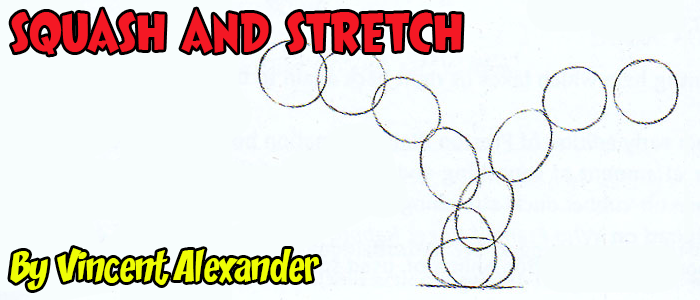

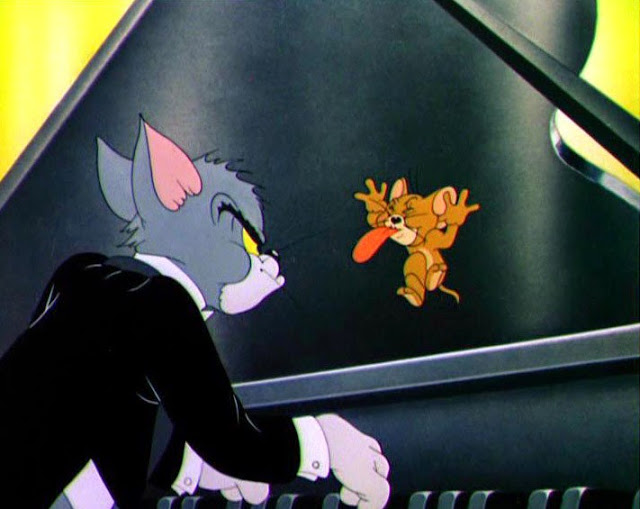

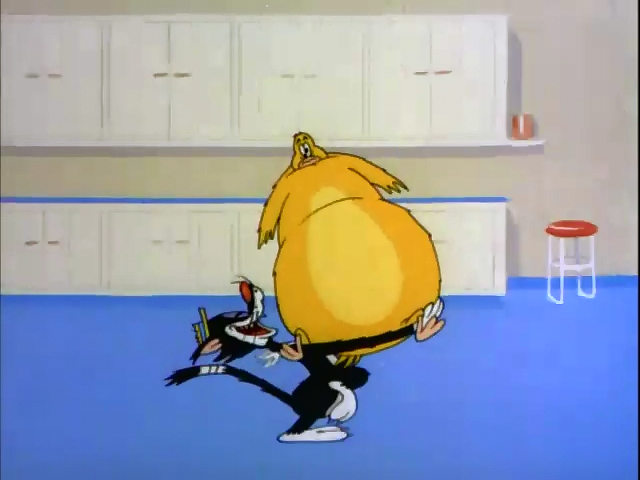
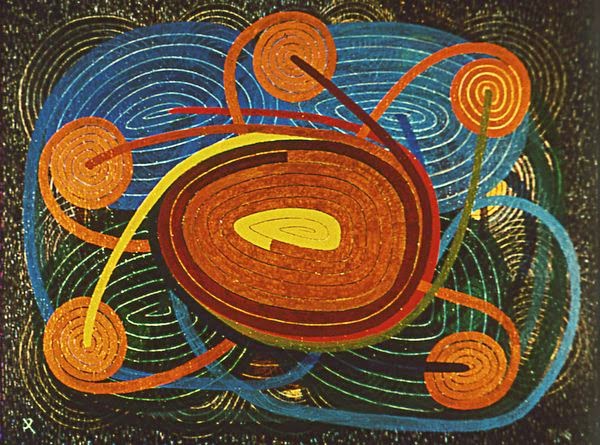
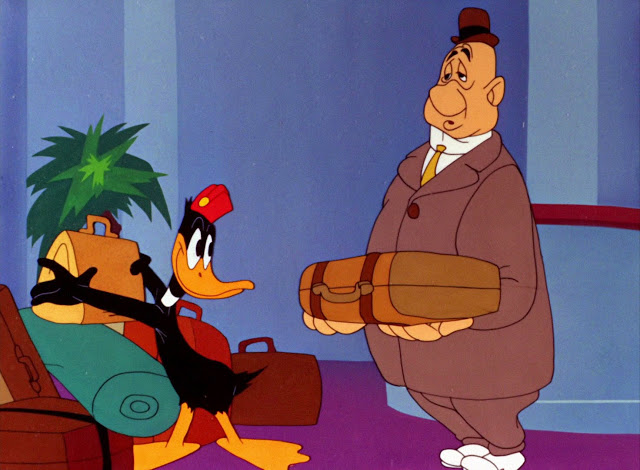
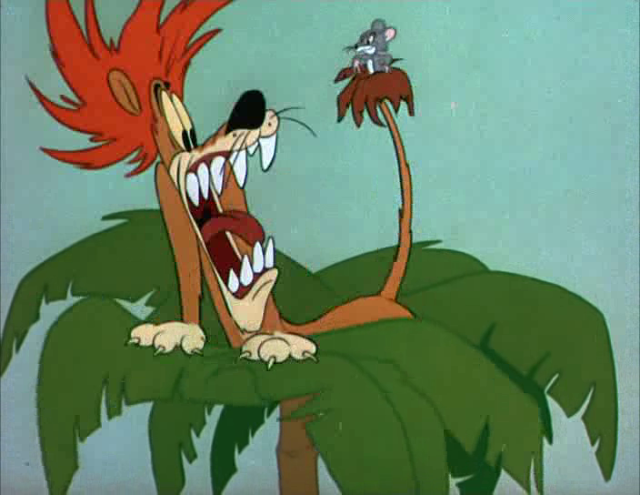
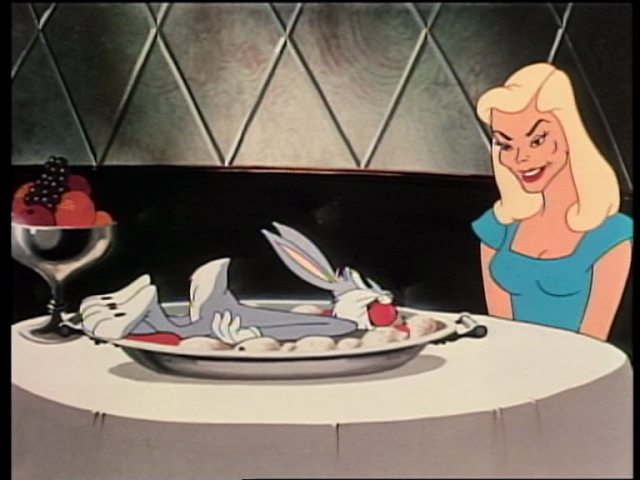
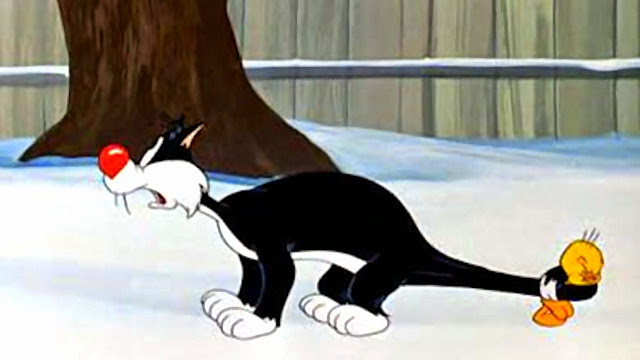








2 Comments